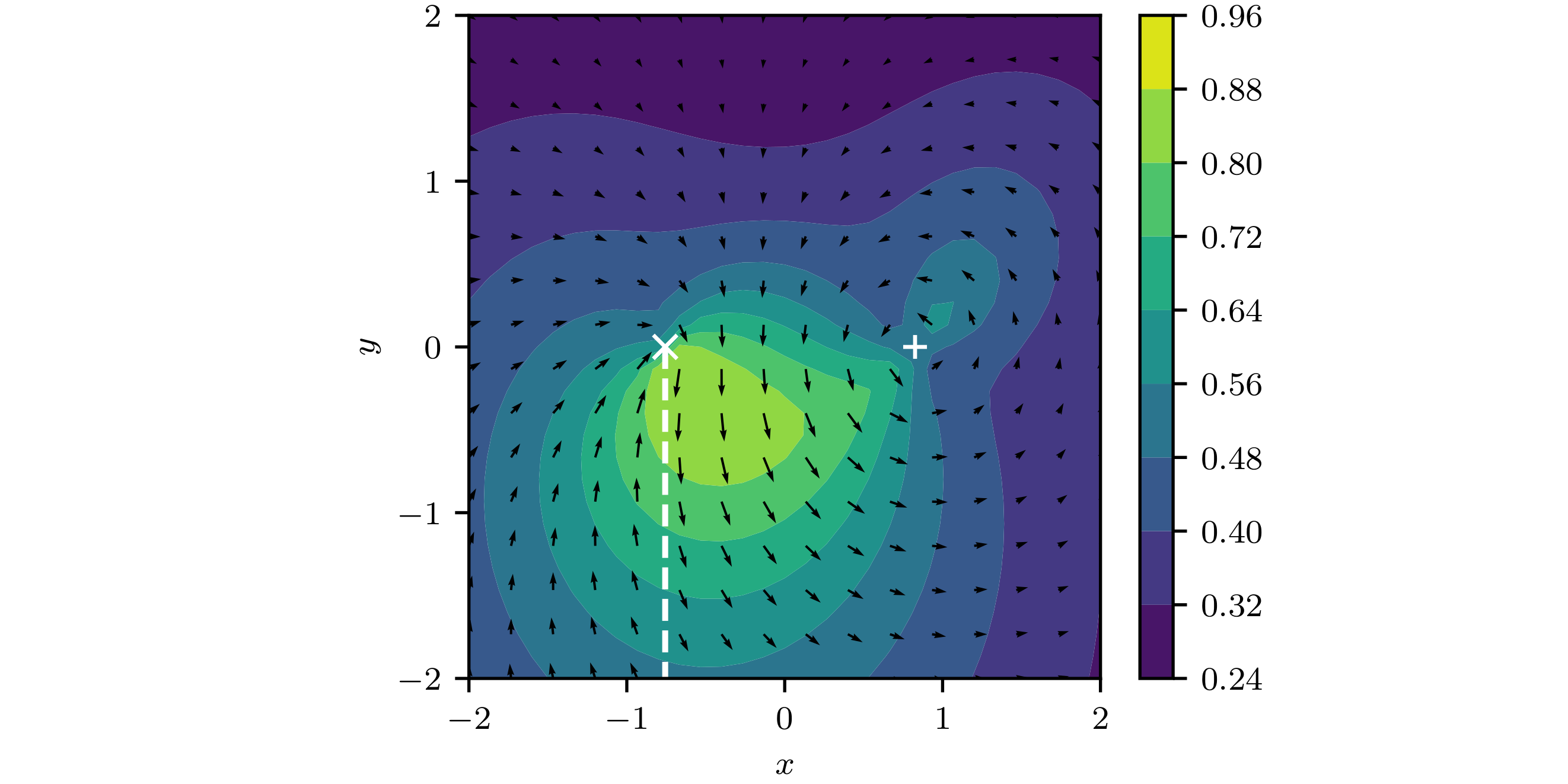Machine Learning of a Double-Valued Function
We describe an algorithm for learning objects in quantum chemistry such as nonadiabatic coupling vectors, which are double-valued near concial intersections.

Contour plot of the nonadiabatic coupling vector showing the magnitude with the colours and direction with black arrows. The conical intersections are indicated by the white symbols and the branch cut by the white dashed line.
Some questions have more than one answer, such as, "what is the square root of 4?". Both 2 and -2 are equally good answers. Functions which return two answers are called double-valued.
In quantum chemistry, nonadiabatic coupling vectors (which mediate transitions between different electronic states) can be double valued in the presence of conical intersections. This makes learning them directly with machine-learning tools very difficult.
In our new paper, we describe an algorithm that transforms this task into a standard machine-learning problem.
